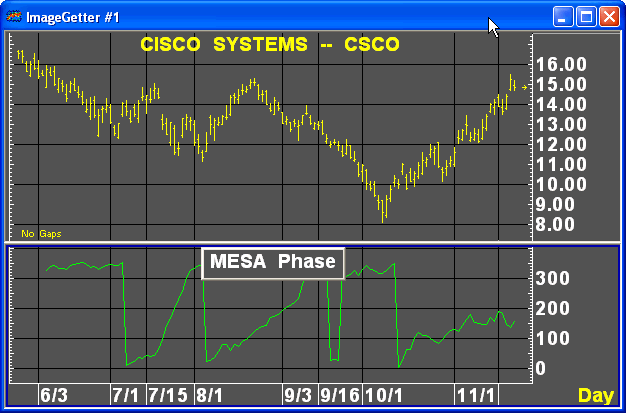|
|
MESA Phase backs up the spectrum study by giving you another way to see how perfectly cyclical the marketís cyclic components are.

The indication of perfect cycling behavior, and therefore of a perfect trading opportunity, is a neat saw-tooth formation stretching all the way across the page. "Saw-tooth" in this case means repeated triangular chart formations with a long, straight sloping side facing the upper left, followed by a near-vertical straight line returning to the bottom of the study window. The illustrations on pages 8, 9, and 10 of the MESA addendum provide good examples.
In practice, getting a whole row of neat triangles is very unlikely. However, if you donít see at least one nearly complete, straight-looking swath pattern at the right side of the screen, you donít have a trading opportunity. When trying to decide the quality of a not-quite perfect saw-tooth, keep in mind that a rising line that rises unevenly but keeps rising is slightly more positive than one that rises, then drops, then rises again.
Determining Questions for MESA Phase
Is there at least one promising, reasonably triangular saw-tooth at the current end of the study window? Or is there at least one appearing to form over the last half-wavelength of the dominant cycle? If yes, the indications of the spectrum are confirmed. If no, this corresponds to inconclusive indications from the spectrum study and indicate that you should probably seek a cyclic trading opportunity elsewhere.
Parameters
